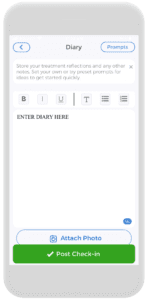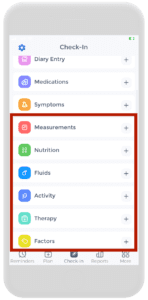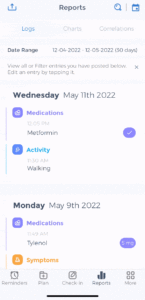
Our world is constantly changing. As we grow not only as individuals, but as a society and community, so do our technologies, our strategies, and our methods. In real-world evidence of pharma, these changes ensure our developments and research stay as relevant and as relatable to the current population as possible. As a result, we have developed a variety of ways in which we collect data. Observation, focus groups, census surveys and questionnaires, and of course, clinical studies, are some to name as an example. Clinical trials are definitely a go-to method for one of the biggest industries in the world, the pharmaceutical industry.
In more recent years, clinical trial designs have been supported by a form of data known as Real World Evidence1. In fact, on December 13, 2016, the 21st Century Cures Act was passed. This act puts a specific focus on these types of data as a means of support for regulatory decision-making in relation to drug approval1, this act added new methods to acquire this data from the general population and transform it into relatable evidence, coining the terms Real World Data (RWD) and Real World Evidence (RWE) in the process. So what is real-world evidence in pharma?
What are Clinical Trials?
Clinical trials are defined as “research studies performed in people that are aimed at evaluating a medical, surgical or behavioural intervention”2. This is one of the foremost ways to develop new treatments, drugs and medication, or medical devices. During these studies, safety, and effectiveness as of the topmost priority. If side effects are present, are they harmful to the individual taking it2. Clinical trials often occur behind the scenes, going unnoticed by the general public but can be ground-breaking to the medical community. In fact, we all recently experienced a huge development in the pharmaceutical industry that used clinical trials in their creation: COVID-19 vaccines.
Phase 1
Clinical trials consist of 3 phases as ordered by the FDA in order to ensure the safety of all participants involved3. Each phase increases in the number of volunteers and specific goals for that trial. Phase 1 consists of anywhere from 20 to 100 volunteers and aims to establish the safety, initial efficacy, side effects and dosage sizing of the novel drug in question3. With the conclusions from this phase, appropriate changes are made, and the drug moves on to phase 2.
Phase 2
Phase 2 is significantly larger, generally consisting of several hundreds of participants. The goals of this phase are to determine which short-term side effects are most common and the immune response experienced as a result of the drug3. Drawing conclusions from this information about how to better the drug and minimize the side effects experienced at the biochemical level, can help us optimize our immune responses.
Phase 3
The final phase includes up to thousands of volunteer participants and is the polishing phase of the process. Some of the goals of phase 3 include determining the effects of the drug on people who have not taken it, and establishing a final verdict on its safety, efficacy, and side effects. If the benefits of the drug outweigh the risk and the drug is deemed safe and effective, the FDA will approve the drug and it will move on to be produced in carefully monitored manufacturing facilities3.
What are Real World Evidence (RWE) and Real World Data (RWD)?
Real World Data
Real World Data refers to the data collected from individuals beyond the scope of controlled trials and from various avenues of life4. Many of us know someone who regularly records their blood pressure, sugar levels or heart rate daily due to some health concerns. Well, real world data collects all of these records from a large number of people within the same topic, say for example, those suffering from hypertension (high blood pressure) and stores it. You can collect this from a variety of machines, including electronically through glucometers, pacemakers, or simply writing down your blood pressure every day on a piece of paper. Replicating this type of practical data to the most realistic extent in a clinical environment is incredibly difficult4.
Real World Evidence
Real World Evidence, on the other hand, is clinical evidence derived from the analysis of Real World Data1. For example, determining that a particular medication has caused significant weight loss in many individuals. Determining this potential risk to the usage of that drug is real world evidence. Generally speaking, conclusions regarding the benefits and risks, or usage of a medical product from any real-world data is real world evidence. In other words, real world evidence provides insight where traditional approaches, such as clinical trials, fail to1.
How do you generate RWD?
You can acquire real world data from many different sources, including:
- For example, your health insurance claims and billing1
- For instance, product and disease registries1
- Electronic health records (EHR) 1
- Data gathered from other sources such as your mobile devices or smart watch1
- Patient generated data1
Using the CareClinic App

It’s no secret that the presence of computers, phones, smartwatches, and many other biosensors has dominated the recent years of health-related data collection1. For example, the CareClinic app on your phone is a convenient place to store your symptoms, medications, side effects and general notes about your everyday health habits, such as sleeping, nutrition and much more.
Furthermore, you may notice in the diary section of your CareClinic record system, that you have recorded feeling quite lethargic since beginning your new medication.
As a result, you can go to your doctor and show them exactly when the dates line up and how the medication has been affecting you, thus, providing real world data and concluding real world evidence on the side effect of this new drug.
Having this information quickly and easily accessible right at your fingertips can help you contribute not only to the pharmaceutical and medical industry but to your own well-being and overall health.
RWE vs Clinical Trials
Real world evidence can extend across many, many years; this is one of its greatest advantages. Real World Evidence makes analyzing and looking at long-term side effects and benefits in the most unbiased and realistic setting possible. Moreover, trying to replicate these aspects in a clinical trial is challenging to say the least.
Clinical trials are controlled. Constantly observed and headed by a team of researchers, results can occasionally be biased, skewed, or misinterpreted by experimental errors in the design of a clinical trial. Attempting to retrieve the same long-term data as real world evidence provides from clinical trials can result in long study periods, follow-up costs, and difficult management in terms of maintenance and consistency during the study period. Additionally, due to the exclusion and inclusion criteria set, the diversification of any recorded results may not be translatable to a real world setting.
There are many examples that demonstrate this point but let’s just take one as emphasis. Imagine a study on the effects of a newly developed blood thinner in phase two of a clinical trial. Within this phase, 300 volunteers test the novel drug, and all have a cardiac illness. The trial proceeds and the FDA approves the drug for use, but say that one of these individuals later changes their diet dramatically – consuming more caffeine and highly acidic fruit, like grapefruit perhaps. Will this have any effect on the blood thinners and their performance? This is the type of data that real world evidence can account for, while traditional clinical trials might miss.
Randomized Control Trials (RCTs)
You may be wondering if there is a type of clinical trial deemed more reliable than the rest. Randomized control trials are a form of a clinical trial in which pharma researchers randomly assign human participants into groups that will either receive or not receive the drug of interest.5 While this format is defined as the one with the most reliability – that is, the outcomes represent the general population with the most accuracy – the research is still only conducted on highly selective cohorts of people and is under tight control4.
As a result, the exclusion bias we discussed is still present, furthermore making it clear that the participants may fail to reflect on real situations that may occur across the globe4. It is because of these drawbacks that the FDA and many other political organizations now enforce the mutual use of RCTs and RWE to supplement each other, instead of considering them separate and competing. In this way, we can use cases across a variety of individuals with different situations to represent the public most accurately. Establishing this facilitative foundation could make a world of difference.
Why is RWE Important?
Aside from the obvious correlation between the reliability and representativeness of real world evidence in pharma, what makes it so important in today’s day and age? Well, consider this: without real world evidence, research would be unable to progress. Without real world evidence, we don’t know what our next steps are in terms of improving a medical product. Just like a business needs reviews and constructive criticism to grow and thrive, the Pharma industry needs feedback from real people in real-life situations.
Now more than ever before, we can use cases from many different patients in many different scenarios. With the rise of technologies and products associated with our health or the health care provided to us, we now have the potential to gather relevant data right at our fingertips. Apple watches and other biosensor wearables, computers, and RWE apps on mobile devices – all are becoming more and more important in the regulation of our own health and well-being.
With these devices, we better understand the risks and benefits related to our personal experiences with certain medications we may be taking. We are able to develop more efficient regulation, application and development of similar – but better – products.
Checking in with Yourself

To illustrate its importance, take this example: you’ve just started a new medication and notice that you have more recently been logging a decrease in appetite and significant weight loss on the Check-In page of your RWE app – CareClinic. You are able to report this to your doctor who notifies the appropriate authorities. Turns out, that many others experience the same side effect as you and further research are necessary on the medicine to discover why this side effect may be happening! Having an app like CareClinic not only allows you to stay in tune with your own body. In addition, it indirectly may help others around you by keeping an organized record of your health care.
Are there Disadvantages?
Unfortunately, there are minor disadvantages related to the modernized method of RWE. Along with the mentioned digitalization of healthcare platforms come privacy issues. As with a number of other data-related apps, leaking private and personal information is a risk. Maybe it was your little nephew at dinner last Sunday, or an accidental hacking of your phone – believe me, we’ve all been there – information can be revealed without permission. Moreover, though it is more easily accessible to record RWD and derive RWE, it is also now easier to tamper with the data, creating biases that may alter the outcomes of studies if used after the fact.
Practical Examples of Real World Evidence in Pharma
IQVIA
IQVIA is a large and notorious platform that relies heavily on real world data7. This pharma company makes its business in contract research and assists clients in driving healthcare forward by using Human Data Science. What is Human Data Science you may ask, well, it is simply the study of human science with breakthroughs in data science and technology. An example of how this platform collects RWD is easily identifiable in oncology-EMR settings.
Real World Example: Ovarian Cancer in Greece
A study conducted in Greece focused on patients recently diagnosed with a specific type of ovarian cancer: Advanced Epithelial Ovarian Cancer, or AEpOCa8. The evidence being sought after was regarding treatment types and management patients received, so how was this evidence gathered?
First, RWD was acquired from all hospitals the patients were treated at. This raw data was passed through filters, criteria, and restrictions relevant to the retrospective study at hand. In specific, this study focused on the different modalities of intervention such as debulking and adding Platinum-based or Taxane-based chemotherapy, angiogenesis inhibitor (AI), and poly (ADP-ribose) polymerase inhibitors (PARPis). Using this data, it became much easier to determine what was generally being implemented in hospitals as a response to this subtype of cancer: approximately 90% of patients underwent debulking surgery, half received targeted chemotherapy (bevacizumab) as a first-line treatment, while a quarter received Olaparib or bevacizumab as a second line of therapy.
With this RWD in hand, Greece was able to compare against the USA, UK, France, Germany, Italy, and Spain. All administered carboplatin-paclitaxel combination as the first-line therapy and doxorubicin as the second line of treatment. This study also found that patients in Greece demonstrated a longer survival rate with platinum-based bevacizumab chemotherapy. While patients with BRCA mutations had good responses to PARPi Olaparib. Armed with this new RWE, further studies and plans of action can form to better our care for individuals with AEpOCa at a global scale, proving that cancer tracking through apps or EMR can make great strides in the field of research8.
The Recent Decentralization of Clinical Trials (DCT)
The beginning of the COVID-19 era found us facing many challenges we had never really seen before. One of the industries that were hit the hardest, was in fact the medical community. Doctors suddenly weren’t able to see their patients one on one. Many people skipped a doctor’s check-up in fear of contracting the virus. Thus, what did they do? Doctors began online consultations over the phone or video call!

While this practice of decentralization may seem to have just begun, it actually predates the pandemic. This, in turn, allows the potential for a more diverse and large pool of participants. Thus, decentralized trials are an attempt to bring the health care system to the patient, rather than vice versa9,10. By doing so, you can minimize limitations such as traveling, transportation, lodging, time, meals, and conflicting schedules. A patient no longer needs to visit their primary physician for a prescription refill. But instead, can meet their needs through a simple phone or video call 9,10.
Moreover, the healthcare system has quickly adopted decentralized trials due to their proven benefits in time, money, and diversity. Overall, employing decentralized trials can help get critical products to the market quickly 9,10.
The Role of The CareClinic App
The goal of CareClinic is to make the user’s – that means your – life easier. CareClinic allows you to record day-to-day living information and relevant, personal RWE. CareClinic, therefore, allows you to take control of your life in any direction you may desire.
References
- Food and Drug Administration. (2022, May 20). Real World Evidence. Retrieved from: https://www.fda.gov/science-research/science-and-research-special-topics/real-world-evidence
- National Institute on Aging. (2020, April 9). What Are Clinical Trials and Studies?. Health Studies. Retrieved from: https://www.nia.nih.gov/health/what-are-clinical-trials-and-studies
- Centers for Disease Control and Prevention. (2018, January 26). The Journey of Your Child’s Vaccine. Vaccines for Your Children. Retrieved from: https://www.cdc.gov/vaccines/parents/infographics/journey-of-child-vaccine.html
- Kim, H-S., Lee, S., & Kim, J. H. (2018). Real world evidence versus Randomized Controlled Trial: Clinical Research based on Electronic Medical Records. Journal of Korean Medical Science, 33(34), e213. https://doi.org/10.3346/jkms.2018.33.e213
- Canadian Institutes of Health Research. (2020, January 14). RCT Evaluation Criteria and Headings. Retrieved from: https://cihr-irsc.gc.ca/e/39187.html
- Radawski, C. A., Hammad, T. A., Colilla, S., Coplan, P., Hornbuckle, K., Freeman, E., Smith, M. Y., Sobel, R. E., Bahri, P., Arias, A. E., & Bennett, D. (2020). The utility of real world evidence for benefit-risk assessment, communication, and evaluation of pharmaceuticals: Case studies. Pharmacoepidemiology and Drug Safety, 29(12), 1532 – 1539. https://doi.org/10.1002/pds.5167
- (n.d.). Available IQVIA Data. Retrieved from: https://www.iqvia.com/insights/the-iqvia-institute/available-iqvia-data
- Liontos, M., Timotheadou, E., Papadopoulos, E. I., Zafeiriou, A., Lampropoulou, D. L., Aravantinos, G., Mavroudis, D., Christodouloud, C., Nikolaidi, A., Somarakis, A., Papadimitriou, C., Papandreou, C., & Bamia, A. (2021).. Current Oncology, 28(6), 5266-5277. https://doi.org/10.3390/curroncol28060440
- Agrawal, G., Xue, J., Moss, R., Raschke, R., & Wurzer, S. (2021). No place like home? Stepping up the decentralization of clinical trials. Retrieved from: https://www.mckinsey.com/industries/life-sciences/our-insights/no-place-like-home-stepping-up-the-decentralization-of-clinical-trials
- (2021, July 6). Decentralized clinical trials: Are they here to stay?. Retrieved from: https://www.healthcaredive.com/spons/decentralized-clinical-trials-are-they-here-to-stay/602613/


